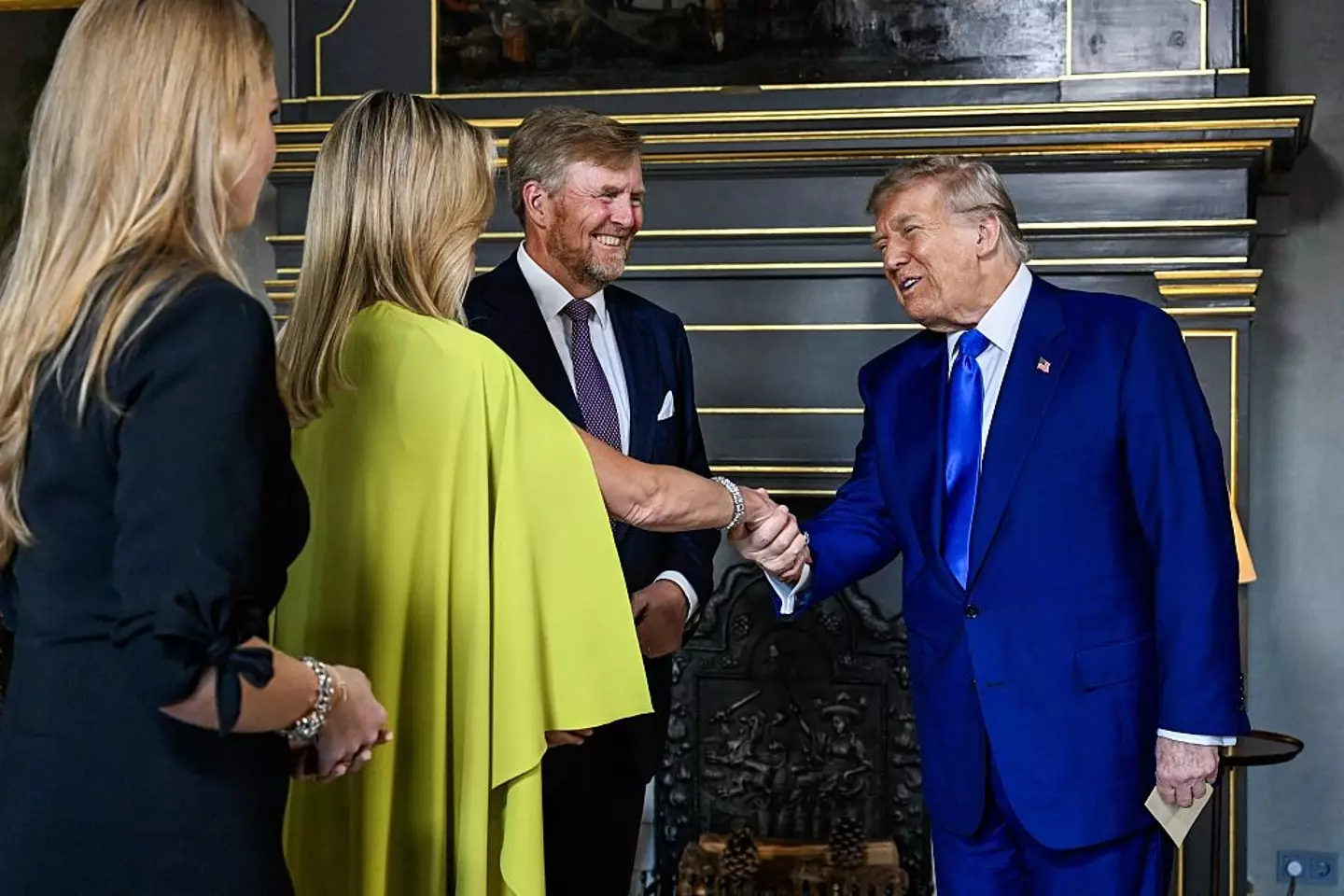The Mini-Trump Mystery: A Deep Dive into a Viral Conspiracy
The recent NATO summit in The Hague was a whirlwind of diplomatic activity, punctuated by polished speeches and the flash of cameras. However, one seemingly innocuous image from the event ignited a firestorm online, sparking a debate that transcends political discourse and delves into the heart of modern misinformation. This wasn’t about a controversial statement or a diplomatic faux pas; the controversy centered on a single, seemingly insignificant detail: President Trump’s perceived height.
A Picture Worth a Thousand Conspiracy Theories
The photograph in question depicts President Trump alongside Dutch King Willem-Alexander and Turkish President Erdoğan. At first glance, it’s an unremarkable snapshot of a high-profile gathering. However, a significant number of social media users noticed something peculiar: Trump appeared considerably shorter than expected, seemingly closer in height to Erdoğan than the significantly taller King Willem-Alexander. This visual discrepancy, though subtle, became the catalyst for a widespread conspiracy theory. Hashtags like #TrumpDouble quickly trended, and the internet buzzed with speculation about a possible “mini-Trump” – a body double impersonating the former president.
Fueling the Flames: A History of Presidential Doubles

This incident isn’t an isolated event. Conspiracy theories surrounding political figures, particularly the Trump family, have a long and persistent history. Former First Lady Melania Trump has been the subject of similar speculation, with some alleging the use of body doubles in public appearances due to perceived inconsistencies in her features and appearance across various photographs and video footage. Therefore, the “shorter-than-expected” Trump image tapped into pre-existing anxieties and readily available conspiracy narratives.
Dissecting the Image: Height, Angles, and the Power of Perception
The internet exploded with speculation, fueled by side-by-side comparisons of various Trump images, highlighting discrepancies in posture, proportions, and even ear shape. Users offered witty remarks, comparing the situation to a scene from “The Parent Trap,” highlighting the absurdity and entertainment value of the theory.

However, experts quickly countered these claims, citing several plausible explanations for the perceived height difference. Perspective, camera angles, and even the height of the individuals’ footwear (King Willem-Alexander’s reportedly substantial heels) could easily account for the visual discrepancies. The principles of photography and optics, they argued, are not easily ignored. One photography expert succinctly summarized it as “basic physics and perspective.”
Beyond the Pixels: Analyzing Trump’s Demeanor

Despite the rational explanations, the conspiracy continued to gain traction. Some claimed that Trump’s demeanor in the photo seemed different – a lack of his usual “swagger” or characteristic smirk – further adding fuel to the fire. This focus on minute details illustrates the subjective nature of the evidence and how readily confirmation bias can distort interpretations.
A Historical Precedent for Presidential Doubles
The idea of political figures employing body doubles isn’t entirely new. Historical accounts suggest that leaders such as Saddam Hussein utilized stand-ins for public appearances, and even Winston Churchill is rumored to have used a voice double during wartime broadcasts. However, in today’s era of high-resolution imagery and pervasive global media coverage, the feasibility of a convincing body double deception is highly questionable, especially in a context as closely scrutinized as an international summit.

The Underlying Concerns: Health and the Erosion of Trust
Beyond the image itself, other factors contributed to the theory’s appeal. Concerns about President Trump’s health and fitness, particularly considering his age and upcoming campaign, fuel anxieties and enhance the perception of any slight change in his appearance. The conspiracy taps into a deeper unease, a fear that the public isn’t receiving the full, unfiltered truth. This sentiment is amplified in an era marked by sophisticated deepfakes and AI-generated content, blurring the boundaries between genuine and fabricated images.
The Amplifying Effect of Social Media
Social media platforms like X, TikTok, and Reddit acted as powerful accelerants, amplifying the conspiracy theory. The hashtag #TrumpDouble quickly went viral, attracting a diverse range of reactions. While some users mocked the theory, others engaged in intense analysis, scrutinizing jawlines and earlobes. Fact-checkers struggled to contain the spread of misinformation, presenting counter-evidence and alternative perspectives, highlighting the challenge of combating disinformation in the digital age.
Silence, Speculation, and the Psychology of Conspiracy
The White House’s official silence on the matter further fueled the speculation. This lack of response, interpreted by some as an avoidance of legitimizing the claims, actually strengthened the belief among conspiracy theorists. The absence of a direct denial was seen as tacit confirmation, a perfect example of how silence can be misinterpreted and exploited in the context of online discourse.
The persistent appeal of such conspiracy theories, even in the face of contradictory evidence, stems from several psychological factors. Humans inherently seek patterns and explanations, particularly in uncertain times. Conspiracy theories, regardless of their factual basis, provide a narrative framework to interpret seemingly inexplicable events, offering a sense of order and control in a world perceived as chaotic and unpredictable. Dr. Marina Hill, a cognitive behavioral specialist, highlighted this point, emphasizing that belief in such theories is more about emotional satisfaction than factual accuracy.
A Reflection of Modern Political Discourse
Ultimately, the “mini-Trump” controversy isn’t just about a single photograph; it reflects a deeper societal shift. It reveals a world where digital images possess immense power, capable of overshadowing substantive political discussions. It highlights the constant struggle to discern truth from falsehood, where perception frequently outweighs reality. The story underscores a prevailing skepticism and the complexities of navigating the intricate landscape of modern information dissemination. The enduring mystery of the image, regardless of the truth, leaves a lingering question mark hanging over the credibility of information in the digital age.